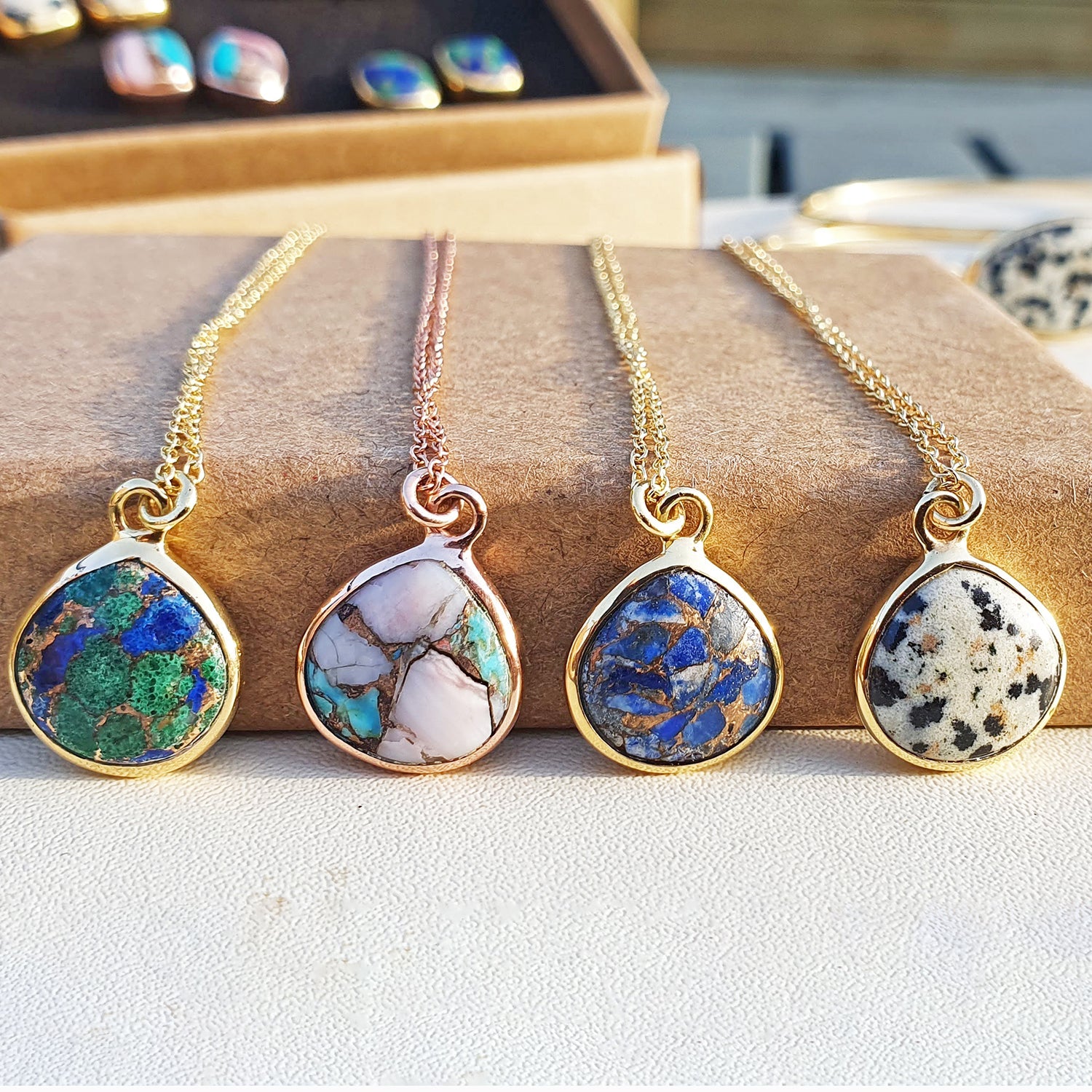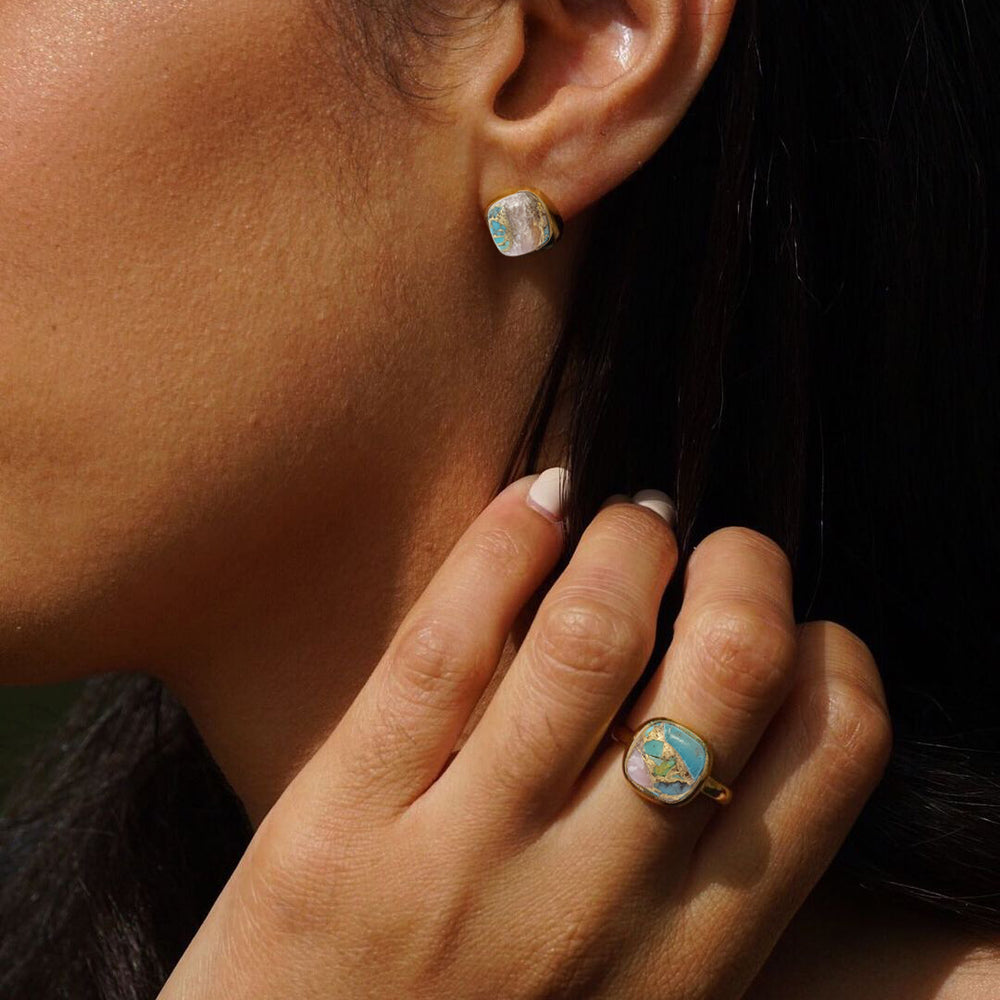Shades of Blue: Exploring Aquamarine March Birthstone Jewellery and Its Meanings
The gem of the sea, aquamarine, has been linked to the oceans of the world for millennia. This isn’t particularly surprising, as the brilliant blue colour of aquamarine is exactly what has led to its name and its association. Aquamarine, from the Latin aqua marina, literally meaning sea water. As a variety of the beryl stone, it can count emerald and morganite as its figurative sisters in the gemological sense.

The Meaning and History of Aquamarine
In a fact that will shock next to no-one, much of aquamarine’s symbolism, meaning, and history is tied to the oceans. The calming blue and the purity of the seas and the gem have been popular in Europe since at least the times of the Romans. Young Roman lovers would exchange jewellery of aquamarine if they wanted their relationship to be centred on love rather than lust. This symbolism came from the purity of the gem, as it was said that the pure blue of the aquamarine was so pure it would purify anything around it, especially relationships.
It was also used by ancient sailors as a gem of protection. The stone which was so deeply linked to the seas would save them from the ocean’s wrath on their travels. Some gave one gem to their family to keep on shore, and took one gem with them, so that the power of the gems would always bring them back home to their loved ones. Another association is with the apostle St. Thomas, who travelled over sea to places like India to spread Christianity. He is said to have carried an aquamarine gem with him on his journeys to protect the ships he travelled on from disaster.
The poet William Langland also wrote in 1377 that the gem was an antidote for poison. This led to many royals and important figures wearing aquamarines to protect them from any attempted assassination attempts, which were concerningly common at the time. We’re still not quite sure where Langland pulled the idea that wearing an aquamarine can cure poison, but we can politely suggest that it’s not something to be tested.
In parts of the ancient Middle East, aquamarine was considered to be a stone that brought with it happiness. The brilliant blue of the gem was said to bring light into people’s lives and light up even the darkest places. It also became well known as a good gift for a husband to give to a wife after their marriage.

Where does Aquamarine come from?
The largest source of aquamarine gems nowadays is Brazil. Mines in the states on the eastern coast are the main source, although some do exist further inland. The countries of the south-east of Africa also have smaller sources of the stone, places like Malawi, Zambia, and Tanzania. Some have also been found on the island of Madagascar, just on the other side of the Mozambique Channel. Even smaller historical sites are found in Colombia, Sri Lanka and Russia.
The properties of Aquamarine
As one of the varieties of the mineral beryl, aquamarine has many gemological sisters. The specific aquamarine colour and brilliance comes from small iron impurities in the stone. The amounts and types of irons inside the stone can affect the colour and the brightness of each gem. This also means that the brightness of the gem can be artificially changed through irradiation. Some other beryl varieties can also be transformed into aquamarines with proper irradiation.

Aquamarine - the March birthstone
Aquamarine came to be the birthstone for March through its association with the star sign Pisces. The star sign, which translates from Latin as “fishes”, unsurprisingly has a strong link to the ocean. It was only natural then that aquamarine came to be the gem that represented it.
Mystical properties of Aquamarine
Most of the mystical properties are also tied to the ocean and water. The Ancient Greeks believed that water with an aquamarine stone in it would help with sickness. In Medieval times this expanded to mental wellbeing too, as people suffering mental illnesses would be given an aquamarine gem to soothe their minds. It became a sort of “all purpose” healing stone, and water with aquamarine and the wearing of the gem were said to heal all kinds of illnesses, physical and mental.
Interesting facts about Aquamarine
- The biggest aquamarine ever found weighed 110kg
- The famous Dom Pedro aquamarine was named after Emperor Pedro of Brazil
- Some of the first eyeglasses were made of polished aquamarine
- Brazil is the world’s largest aquamarine producer nowadays
- Particularly deep blue aquamarine is called maxixe
Caring for your Aquamarine jewellery
Aquamarine is a fairly tough gem, sitting in the high 7s of the Mohs scale. This doesn’t mean that you can throw it around though, as it can still be scratched and lose colour. Soap and water won’t damage the gem, nor will a soft cloth, but any stronger chemicals might discolour it. It can scratch other gems if stored together too close so do be careful. As with many of its sister gems, it can lose colour if left in sunlight for too long. This colour can be restored artificially, but the natural colour is always best.
Where to buy Aquamarine jewellery
Aquamarine is such a classic gem, it goes with all kinds of tones and can be a focus as well as an accompaniment. We have some exciting birthstone collections featuring Aquamarine coming very soon - watch this space! Jasper, the other March birthstone, is also available in the Bianca collection. This includes a pair of dalmatian jasper earrings, a matching necklace, a matching bracelet, and a beautiful hexagonal ring. All the pieces are set in 18kt gold vermeil frames which give them a luxury feel.





Leave a comment